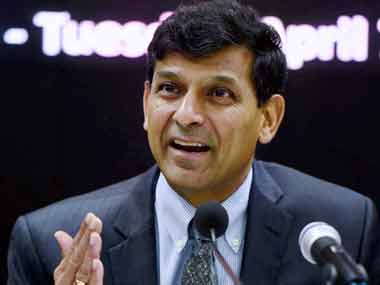Last week, as Governor Raghuram Rajan wrote his ‘intention to go back to academia’ letter to RBI staff, on a Friday evening, he had clearly hinted that ‘Barkis had been willing’, and he was returning with regret that he could not accomplish all the tasks he had set for himself. Many self-proclaimed financial experts appeared on the scene to pillory the government that it did not deserve a person of Rajan’s calibre, and predicting a blood-bath the following Monday when markets opened. In the event, the first three hours saw the market accept the decision with aplomb, without showing any nervousness, till about noon time when the bull-run started on the Cabinet decision of FDI liberalization. Many conspiracy theories were hinted at by so called ‘insiders’— these ranged from reference to pressures from specified or unnamed business groups, not being sufficiently deferential to the Finance Minister, commenting ‘loosely’ on the policies of the ruling party/ government and so on—the implication was that a major disaster had befallen the government. One even heard speculation that the government was ‘anti-technocrat’, to explain the decision. [caption id=“attachment_2857414” align=“alignleft” width=“380”]  File photo of Raghuram Rajan. PTI[/caption] One of the first steps in 2004 of the Sonia-Manmohan government was to summarily give marching orders to the then Cabinet Secretary, who had more than one year of his tenure left. Arguably, this was the first high-level sacking of a bureaucrat merely because he was appointed by the previous regime. In Rajan’s case, the same critics finding fault for not giving a second term to him, would have cried foul if he had been asked to leave in 2014. One can surmise that the government was keen to continue him because of his stature in the international monetary world—recall that Nandan Nilakani’s Aadhaar idea, from an earlier regime, was eagerly accepted and adopted by the Modi government, who made a remarkable success of its implementation. Note also that unlike in many previous regime changes, no mass transfer of secretaries or senior incumbents took place in 2014. How much credence could be attached to the anti-technocrat theory? It is a fact that the senior bureaucrats in the Modi government, particularly those who have proven themselves in the last two years, have been given all support and incentive to perform. Indeed, compared to the previous two UPA terms, where the senior secretaries were mostly helpless by-standers as the ministers were given free rein to bend the rules, the NDA secretaries now are near-equal partners with their cabinet ministers in policy formulation and implementation decision-making—the mantra is performance. This may lead one to conclude that the bureaucrats now hold a major say in current affairs. We should not forget that the erstwhile Planning Commission, which functioned as a berthing place for senior bureaucrats has now been dismantled. The likes of Arvind Panagariya, Radha Mohan Singh and Bibek Debroy are now key players in the system. Niti Aayog now plays a major role in the current policy making. Possibly the pre-eminent position that the erstwhile Cabinet Ministers and senior politicians enjoyed in the old regime has been slightly diluted with increased responsibility and role to bureaucrats and technocrats alike. So much for the theory about the reason for Rajan’s exit. One has to look elsewhere for an explanation. While Rajan’s expertise and international standing in monetary policy was unquestioned, there was enough speculation floating in the system on whether he actually knew India well—did he have enough empathy and understanding of critical new developments in the social, agricultural, rural and other sectors not directly connected with financial infrastructure. There were questions over whether he understood the need for support in employment generation and skill development. With Digital India poised to reach every village in the next couple of years, was there sufficient awareness of the need to invest heavily at this time to bridge the urban-rural divide? Why was a full Post Bank not accepted with alacrity, considering it had a potential for 2.5 lakh delivery points? It would have reached six crore micro enterprises with tiny loans—thus reaching a community which is serviced exclusively by usurious money-lenders. This community provides 92 percent of India’s employment, while having access to only two percent of official funding sources. An educated guess is that these are the key issues which have presumably prompted the key decision makers, who are now being criticised by vested interests in the big-business arena. The RBI chief necessarily has to be a monetary expert, but even more so, he should know India well. We have paid a heavy price in the past by having the likes of Montek Ahluwalia, reputed to be monetary experts, with inadequate appreciation of the key development vectors in our economy. The new bank chief needs to know India well, while being a finance expert—surely we can find one such person.
How much credence could be attached to the anti-technocrat theory surrounding Raghuram Rajan’s exit? From the evidence at hand, it seems implausible.
Advertisement
End of Article


)

)
)
)
)
)
)
)
)



